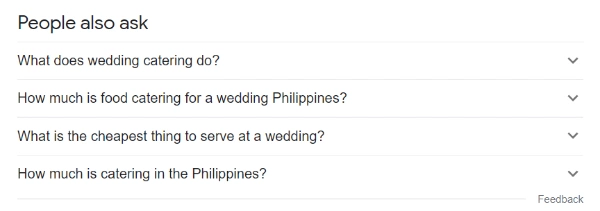SEO
How to Rank for Google’s Helpful Content Update

Zero Traffic from Google—that is what more than 50% of online content gets everyday. Ahrefs found this out last 2020.
And yet, countless websites continue to put them out regularly—a problem made even worse with all the AI-powered content tools out there. The result is an endless flood of low-quality blogs and posts that are, ultimately, not useful for anyone who reads them.
So, what did Google do in response? They put out another addition to their algorithm, called the “Helpful Content Update.” Their goal with this one was to help make sure that valuable content that actually helps their users (a.k.a., people-first content) would be able to rank.
Much like with every update, SEO professionals like you and I need to revisit our strategies to stay ahead of the game. In this article, I will show you some tactics I use to write content for people first, while maintaining good SEO practices.
What We Know About Google’s Helpful Content Update
The Helpful Content Update algorithm update by Google was designed to improve user experience by putting high-quality content written for people higher up in the SERPs.
Here’s how Google put it in their own words:
“The system generates a site-wide signal that we consider among many other signals for ranking web pages. Our systems automatically identify content that seems to have little value, low-added value or is otherwise not particularly helpful to those doing searches.
Any content—not just unhelpful content—on sites determined to have relatively high amounts of unhelpful content overall is less likely to perform well in Search, assuming there is other content elsewhere from the web that’s better to display. For this reason, removing unhelpful content could help the rankings of your other content.”
While this update was first announced back in September 2022, it has now progressed into a global update, impacting all languages. Google also announced that the system will continue to publish new signals over the coming months, helping their site identify more content created primarily for search engines versus people.
What does this mean for your website? Well, there are a lot of changes that others have documented in the last few months, which I summarize for you here:
- Purely AI-generated content is considered spam, and Google will be using its machine learning algorithm to detect it.
- Content made for clicks (i.e., ad monetization) won’t work anymore.
- There may be no manual penalties, but sites have experienced losing organic visibility.
- It seems to affect the overall site performance, rather than hitting specific pages—and Google won’t be telling you which pieces of your content it has deemed as not useful.
Google’s Danny Sullivan also talked about this update possibly working in connection with future updates:

So, like Hummingbird, this update may become fundamental to ranking algorithms—which means that its exact effects could be only observed over the next few years.
Even so, it already puts a stronger emphasis on your content. Writing with a “search engine first” approach should no longer be your angle.
After all, Google is, primarily, a space for users to learn. So, it makes sense that they’re making no room for unhelpful content.
While this update will undoubtedly be more damaging for poor-quality sites, it also presents an opportunity for well-maintained sites to take a second look at their content strategy.
How to Optimize Your Content—and Make it More “Helpful”
With this update, we have to start thinking about our content holistically, rather than just trying to gain as many clicks as possible (or maybe even a featured snippet).
To achieve this, you have two main action points to consider: improving your intent and processes, and providing high-quality content.
Let’s go over some tips I’ve come up with in the last two months to better tackle these points (and enhance your writing):
Review Your Intent and Your Audience
Before you even start on your next blog post, you need to know who your audience is.
Ask yourself, who are you writing for? What are their needs, and why are they asking these questions? What do they need help with?
These questions will help you tailor your content to help your target audience. Otherwise, it’s likely that whatever you write won’t be considered helpful by Google—and you won’t be able to reap the benefits from your work.
If you’re having trouble understanding who your audience is, then take a look at your Google Analytics data, under your demographic details report. This is the best place to gain some insight into who is currently looking at your content, as well as other things they might be interested in.
So, beyond inserting your keyword into your blog post, consider factoring both your intended audience and relevant adjacent content.
Provide Real Expertise, Insights, and Experiences
When it comes to making helpful, valuable content, it’s a big plus if you have some first-hand expertise to add to your writing.
Avoid writing on topics that are trending, but you know nothing about. I also highly recommend against simply regurgitating information you’ve seen in other posts. Instead, your insights and experiences with the topic should be the main focus of your writing.
Not an expert on the particular topic you’re currently drafting? That’s okay—not everyone can be one. You can still produce helpful content by doing your due diligence, diving deep into research, and sharing what you’ve learned.
Remember, readers can see right through you if you’re faking being an expert, so avoid making false claims at all costs.
Use AI Content Strategically
Though this update may be primarily aimed at reducing the amount of AI-generated content out there, that doesn’t mean your tools no longer have a place in your work.
AI tools, such as the increasingly popular ChatGPT or our recently-reviewed Content Marketing Platform from SE Ranking, can still be used to improve your work and productivity. The key is to use them strategically.
Use them to lighten your workload, and avoid depending solely on them. For example, you can use your tools to help you generate better titles or introductions—but always remember to add a human touch to whatever they make. And, make sure that the bulk of the ideas come from you!
Try to Hit Related Queries (Such as the People Also Ask (PAAs))
I mentioned that we have to start approaching our writing holistically, and that means providing as much valuable information to our readers as possible.
Now that being helpful is the name of the game, it’s a great time to take a look at all the related queries users have for your intended topic. Here’s what comes up when I google ‘wedding catering:’

Check the PAAs and related searches that pop up when you type in your keyword. These aren’t just generated questions Google thinks people might ask—they’re actually being searched up by real people! These will provide good subheadings to include in your next blog article.
Ask Yourself: Will Readers Be Satisfied After Reading Your Content?
Things like word count and keyword density are now a thing of the past with this update. The most important thing now is that your audience enjoys what they’re reading, or they learn something of value from your article.
In short, they leave your site feeling satisfied.
So, always gauge your writing by asking this question: will people be satisfied after reading this?
For example, if you’re writing an article on how to properly brew specialty coffee, will the reader come away from your article with more knowledge than before? Will they have all their questions answered? Will they know how to properly brew their new coffee beans?
If the answer is yes, then you’re doing great. But, if you’re unsure—or the answer is a resounding no—you must make some changes.
That said, not every reader that comes across your work will be happy with what you’ve written. It is, after all, impossible to please everyone each time you publish something. However, as long as a majority of your audience is satisfied, then you’re doing something right!
Revisit Your Old Posts
Lastly, because this update affects you sitewide, it’s a good idea to look at your previous work.
If you’re like me, then you’ve been blogging for upwards of a decade—and that might mean some of your posts aren’t as valuable to readers today. The content might be outdated, or not up to snuff with newer guidelines, but either way, this bank of legacy content can bring your traffic down.
So, revisit your work and review its ability to provide your readers with the answers and experience they’re looking for. Take the time to check if you need to make some additions to make it useful once again, or redirect them to newer content. I highly recommend prioritizing evergreen content, which is something I covered in my Blog Writing 101 guide.
This is especially important if you’re in any industry that moves fast (think fashion or tech). Content here usually goes from helpful to obsolete in a matter of months!
Key Takeaway
Google has always favored people-first content, and this recent update is just the latest in many of their attempts to make sure the right content gets to their users.
The Helpful Content Update will continue to release tweaks to their signals over the coming months, so it’s prime time for us SEO specialists to take a second look at our content and writing strategies.
Luckily, this update could be a win for you—just keep these tips in mind, and you’re on the right track to getting the most value from your content efforts.



















You must be logged in to post a comment Login